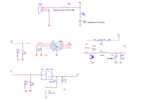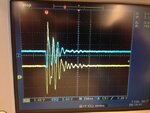aredhel_vlsi
Member level 4
Hello, I have the following question please. How can I measure the capacitor on a pcb? I have a keysight digital multimeter and I select the capacitance symbol. However, for some capacitors, the indication seems blank. I see mF and it seems like it's waiting for ever to show a value. I tried with the power on and off. Maybe it is damaged? I read on the web that if it is damaged, usually it shows a very big value, far from what is expected. What I am doing wrong? Thank you in advance.

